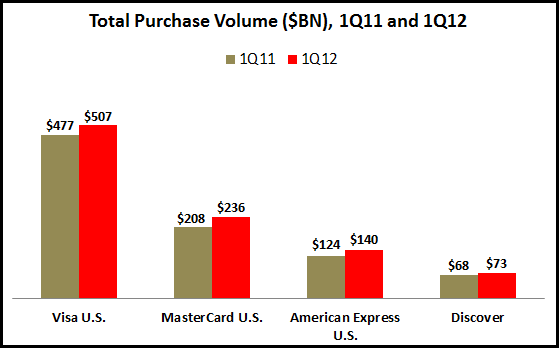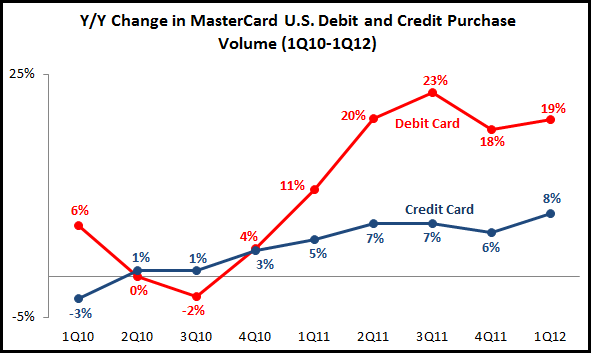Recent regulatory filings from some of the leading U.S. credit card issuers reveal ongoing declines in available credit card lines.
Although the three issuers in the above table all reported credit card line reductions between March 31, 2011 and March 31, 2012, there are some variations among these issuers.
- Chase’s credit card lines fell 6% during this period, but rose in the two most recent quarters, increasing 1% between the end of 2011 and the end of 1Q12.
- Citigroup is the only issuer among the three to report U.S.-only credit card lines, which fell 8% between 1Q11 and 1Q12. However, like Chase, this decline appears to have bottomed out, with virtually no change in the most recent quarter.
- Bank of America reported the strongest decline among the leading issuers, falling 11% between 1Q11 and 1Q12. This represents a continuation of a process of retrenchment that has been in place since the start of the financial crisis. Between end-2008 and end-2011, Bank of America’s credit cards lines fell by 46%. There are some signs that this decline is tailing off, with a fall of only 1.7% in the most recent quarter.
Indications that the significant reductions in credit card lines are bottoming out provide evidence to support industry expectations that card outstandings will grow slightly in 2012.





